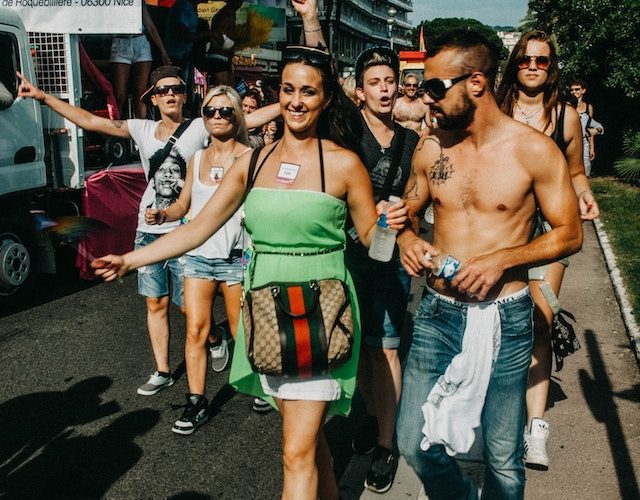Introduction: The Stonewall Riots, which took place in New York City in 1969, marked a pivotal moment in the history of LGBTQ+ rights. These spontaneous demonstrations against police raids at the Stonewall Inn, a popular gay bar in Greenwich Village, ignited a wave of activism and resilience within the LGBTQ+ community. The events at Stonewall played a crucial role in inspiring the first Pride March, an annual celebration and protest that has since become a symbol of LGBTQ+ visibility, unity, and advocacy.
Background on the Stonewall Riots: In the 1960s, LGBTQ+ individuals faced widespread discrimination and persecution in the United States. Homosexuality was considered taboo, and anti-sodomy laws criminalized same-sex relationships in many states. Police raids on gay establishments were common, leading to arrests and harassment of LGBTQ+ individuals.
On the night of June 28, 1969, the Stonewall Inn was raided by the police, as had happened before. However, this time, the patrons of the bar refused to cooperate quietly, and a spontaneous uprising erupted. Frustration and anger over ongoing mistreatment by law enforcement, as well as the desire for basic human rights, fueled the resistance that lasted for several nights.
The Impact of the Stonewall Riots: The Stonewall Riots became a rallying cry for the LGBTQ+ community, serving as a catalyst for change. The uprising empowered individuals to stand up against oppression and demand equal rights. The event sparked the formation of numerous LGBTQ+ activist groups and provided momentum to the burgeoning gay rights movement.
Birth of the First Pride March: In the aftermath of the Stonewall Riots, LGBTQ+ activists recognized the need for greater visibility and solidarity. Brenda Howard, known as the “Mother of Pride,” played a pivotal role in organizing the Christopher Street Liberation Day March, held on June 28, 1970, to commemorate the first anniversary of the Stonewall Riots.
The march, which covered a route from Greenwich Village to Central Park, marked the birth of what is now known as the Pride March or Pride Parade. It brought together LGBTQ+ individuals and their allies, providing a platform for people to openly express their identities and demand equality. The inaugural march attracted thousands of participants, showcasing the strength and resilience of the LGBTQ+ community.
Legacy of the Pride March: Since its inception, the Pride March has become an annual tradition celebrated in cities around the world during the month of June, known as Pride Month. It serves as a vital platform for LGBTQ+ visibility, activism, and community-building. Pride events include parades, rallies, workshops, and cultural celebrations, fostering inclusivity and acceptance while advocating for LGBTQ+ rights.
Conclusion: The Stonewall Riots marked a turning point in the fight for LGBTQ+ rights, inspiring the creation of the first Pride March and paving the way for subsequent advancements in equality. The bravery and resilience demonstrated by the individuals at Stonewall continue to resonate today, reminding us of the ongoing struggle for LGBTQ+ rights and the importance of celebrating and supporting diverse identities. The Pride March remains a powerful symbol of unity, resilience, and the collective journey toward a more inclusive and equitable society.












